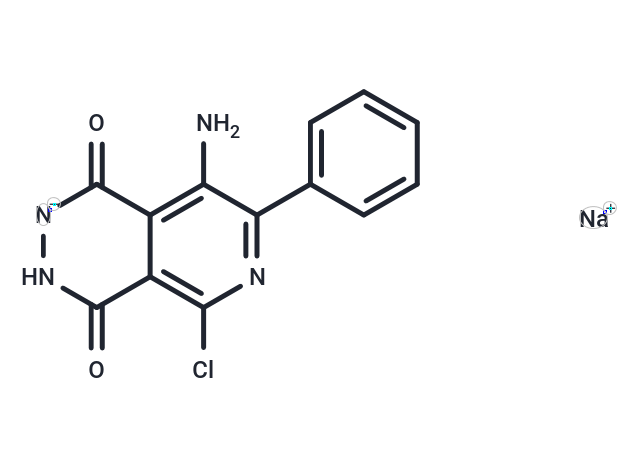Shopping Cart
Remove All Your shopping cart is currently empty
Your shopping cart is currently empty
L 012 sodium salt, a luminol analogue, is a widely used chemiluminescent (CL) probe for active oxygen and active nitrogen. L 012 sodium salt is widely used to detect the superoxides (O2•−) derived from NADPH oxidase (Nox) to find Nox inhibitors.

| Pack Size | Price | USA Warehouse | Global Warehouse | Quantity |
|---|---|---|---|---|
| 1 mg | $51 | In Stock | In Stock | |
| 5 mg | $122 | In Stock | In Stock | |
| 10 mg | $189 | In Stock | In Stock | |
| 25 mg | $323 | In Stock | In Stock | |
| 50 mg | $479 | In Stock | In Stock | |
| 1 mL x 10 mM (in DMSO) | $133 | In Stock | In Stock |
| Description | L 012 sodium salt, a luminol analogue, is a widely used chemiluminescent (CL) probe for active oxygen and active nitrogen. L 012 sodium salt is widely used to detect the superoxides (O2•−) derived from NADPH oxidase (Nox) to find Nox inhibitors. |
| In vitro | L 012 sodium salt is a new chemiluminescent probe. In activated EoL-1 cells which generated reactive oxygen species (ROS), treatment with L-012 generated a significant chemiluminescence. While, superoxide dismutase (100-300 U/ml) abolished the chemiluminescence, which suggested that the main ROS detected was O2- [1]. In cultured endothelial cells, phorbol 12-myristate 13-acetate (PMA, 1 μM) caused an 2.8-fold increase of L-012 chemiluminescence. Vanadate (100 μM) increased the chemiluminescence up to 17-fold. These results suggested that the increase of superoxide produced by NAD(P)H oxidase |
| In vivo | In the human oral cavity and blood and rat peritoneal cavity, L-012 reacted with ROS generated by activated neutrophils and generated strong chemiluminescence, which was higher than that of MCLA [2]. In nonobese diabetic mice and K8 knockout (K8(-/-)) mice, treatment with dextran sulfate sodium generated an increased L-012 chemiluminescence which detected reactive oxygen and nitrogen species (ROS and RNS) [3]. |
| Molecular Weight | 310.67 |
| Formula | C13H8ClN4NaO2 |
| Cas No. | 143556-24-5 |
| Smiles | O=C1N[N-]C(C2=C(C(C3=CC=CC=C3)=NC(Cl)=C12)N)=O.[Na+] |
| Relative Density. | no data available |
| Color | Yellow |
| Appearance | Solid |
| Storage | store at low temperature | Powder: -20°C for 3 years | In solvent: -80°C for 1 year | Shipping with blue ice/Shipping at ambient temperature. | ||||||||||||||||||||||||||||||||||||||||
| Solubility Information | H2O: 3.16 mg/mL (10.17 mM), Sonication and heating to 60℃ are recommended. DMSO: 45 mg/mL (144.85 mM), Sonication is recommended. | ||||||||||||||||||||||||||||||||||||||||
| In Vivo Formulation | 10% DMSO+40% PEG300+5% Tween 80+45% Saline: 1 mg/mL (3.22 mM), Sonication is recommended. Please add the solvents sequentially, clarifying the solution as much as possible before adding the next one. Dissolve by heating and/or sonication if necessary. Working solution is recommended to be prepared and used immediately. The formulation provided above is for reference purposes only. In vivo formulations may vary and should be modified based on specific experimental conditions. | ||||||||||||||||||||||||||||||||||||||||
Solution Preparation Table | |||||||||||||||||||||||||||||||||||||||||
H2O/DMSO
DMSO
| |||||||||||||||||||||||||||||||||||||||||
| Size | Quantity | Unit Price | Amount | Operation |
|---|

Copyright © 2015-2026 TargetMol Chemicals Inc. All Rights Reserved.